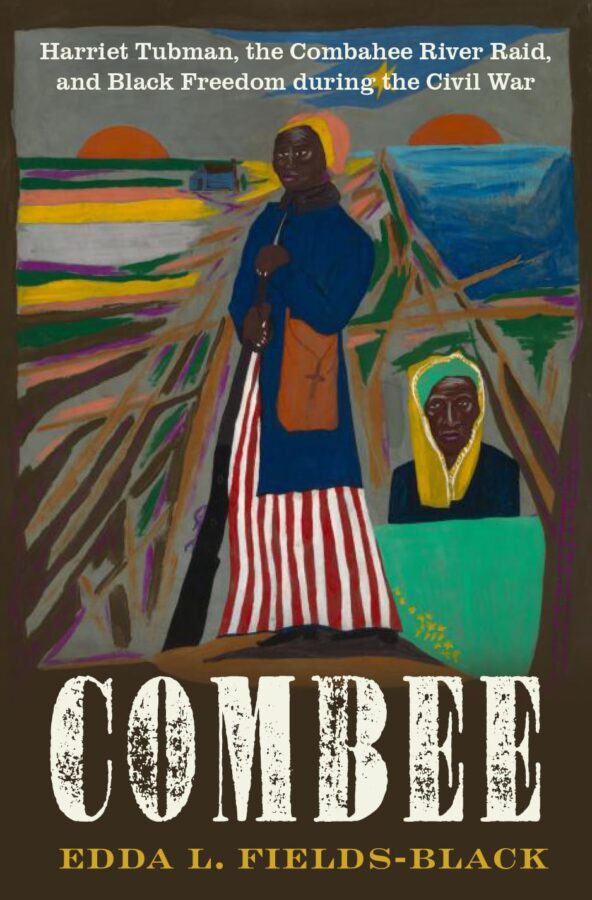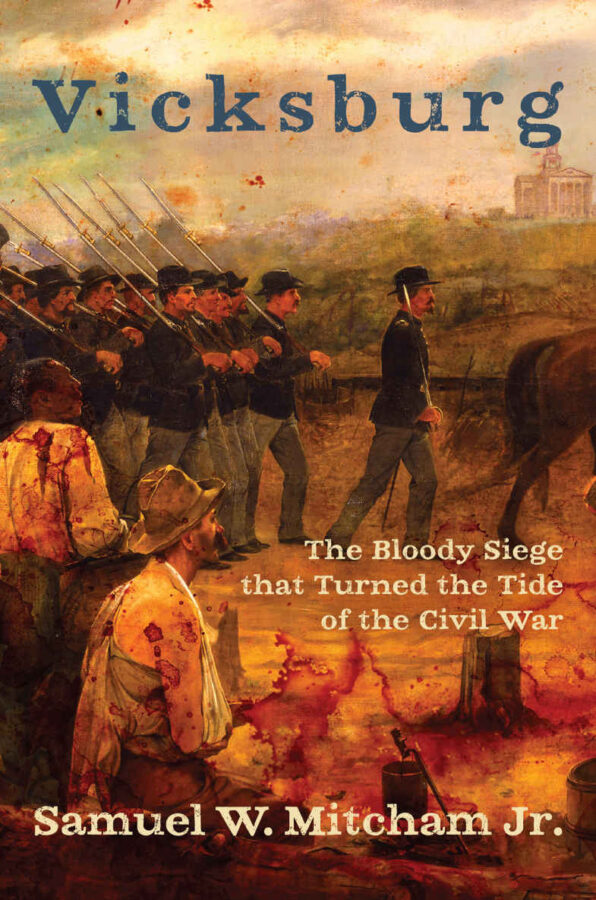 Combee: Harriet Tubman, the Combahee River Raid, and Black Freedom during the Civil War by Edda L. Fields-Black. Oxford University Press, 2024. Cloth, ISBN: 978-0-19-755279-7. $39.99
Combee: Harriet Tubman, the Combahee River Raid, and Black Freedom during the Civil War by Edda L. Fields-Black. Oxford University Press, 2024. Cloth, ISBN: 978-0-19-755279-7. $39.99
Combee is a transcendent, once-in-a-generation historical exploration of a world mostly veiled in the river damp that rises from the lower Combahee—the long submerged rice plantations of the South Carolina Lowcountry. It tells the story of backbreaking toil under a relentless summer sun; of personal courage and fortitude by numberless, heretofore nameless enslaved men, women, and children. Read closely and one can almost hear the sound of three Yankee gunboats chugging through a humid June dawn carrying 300 Black men outfitted in blue tunics, shiny brass buttons, toting muskets with gleaming steel bayonets, led by an indefatigable Black woman known as “Moses.”
But Edda L. Fields-Black’s narrative is so much more than a campaign study of the June 1-3, 1863, raid led by the Underground Railroad conductor, nurse, and spy Harriet Tubman and carried out by soldiers of Colonel James Montgomery’s Second South Carolina Infantry (what Fields-Black calls “the largest and most successful slave rebellion in US history”). Combee is an insightful, anthropological investigation of a deeply-rooted way-of-life dependent on the exploitation of enslaved Black bodies, as well as a personal genealogical journey of discovery for the author (the third great-granddaughter of one of the men liberated that glorious day). This combination of penetrating factual analysis and committed personal connection makes Combee a unique contribution to Civil War historiography while holding a mirror to our contemporary struggles with racism, cultural entitlement, and social equality.
Harriet Tubman’s life has been extensively chronicled before, but Fields-Black has made extensive use of Union army pension files, which allow her to assemble perhaps the fullest record of Tubman’s work for the U.S. Army’s Department of the South. According to Fields-Black, it “remains the least studied period of Tubman’s otherwise well-studied life.” The author admits she never intended to write a book about Tubman or the Civil War. Her field of expertise is rice, and she has written extensively about rice farmers in West Africa and the African diaspora—as well as rice cultivation practices on Lowcountry plantations in South Carolina and Georgia. But she quickly discovered that the Combahee River Raid was, in part, about rice, for it destroyed millions of bushels of the staple, striking a humbling blow to Confederate morale.
Fields-Black also relates that this book is about naming. “It recovers the identities of people who were heretofore not identified” in the historical record, she writes. Uncovering the names of the people freed during the raid recovers their humanity, and including them in one of the author’s extensive appendices affords them their rightful place in a rich culture that evolved during the antebellum period. Fields-Black admits this wasn’t an easy process, as many of the records were lost or burned during the sacking of the plantation “big houses” during the raid. Undaunted, Fields-Black uncovered letters, wills, bills of sale, marriage settlements, and compensation requests made to the Confederate government by plantation owners for the loss of their most valuable “property.” From these fragments, the author has reconstructed a detailed, deeply moving kaleidoscope of a resilient people determined to survive until the shrill whistle of “Mr. Lincoln’s boats” set them running for their lives to the riverbank. It was a sight Tubman later likened “to the children of Israel coming out of Egypt.”
Oxford University Press must be commended for including an extensive insert of photographs from Tubman’s life; the wetlands surrounding the Combahee River; portraits of some plantation owners (and of the people freed during the raid); and copies of letters, records, and deeds. Extensive appendices and endnotes show the extent of Fields-Black’s exhaustive research and read as eloquently as the narrative she weaves.
“In the end it is a story about transformation,” Fields-Black writes. “African Americans who had been held in bondage on lower Combahee rice plantations identified themselves in freedom as ‘Combee’ through the end of the nineteenth century. Over time they became part of a broader community and forged common institutions, which flowered and caught the attention of outsiders who called it Gullah in popular media in the 1920s and 1930s.”
The ending of the story Fields-Black relates has not yet been written. “We are finally able to ‘say their names,” she concludes. “And saying their names and telling out stories is a pillar of Black freedom in the twenty-first century.” Everyone reading this extraordinary book with be richer for the effort—and a better person for having spent time with Harriet Tubman and the people who ran to freedom in that long ago dawn.
Gordon Berg’s reviews, articles, and essays have appeared in numerous Civil War publications. He writes from Gaithersburg, Maryland.
